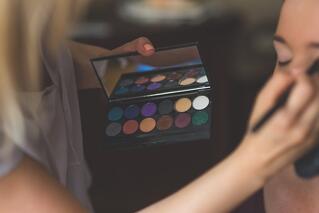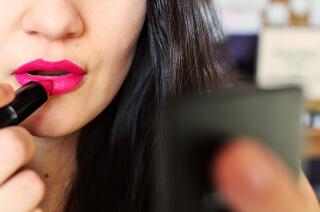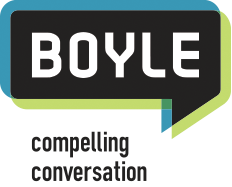How to Dress for TV Interview Success
In any public or interpersonal interaction, first impressions are lasting impressions. But looking presentable becomes even more important when you are representing your company or organization before millions of viewers on TV. So, even though you may have deep knowledge of the subject and a powerful message to share, the very first thing that will catch your viewers’ attention will be your appearance.
Fortunately, if you can remember this one overriding principle, your on-air attire angst is sure to diminish:it’s far more important that the audience remembers what you said, not what you wore.

So, relax a bit. Still, how do you dress in a way that reflects well on your own status and the organization you represent, but does not distract from your message? And how does the camera “see” clothing and accessories?
Well-begun is half won. Follow our top tips to dressing well for TV interviews to discover the secrets that will make you feel comfortable and confident.
To know about other tips and techniques to help you excel media interviews, read our blog How to Prepare for a Media Interview and be the star that you are!
What to Avoid Wearing on TV
- Hues like blacks and reds should also be avoided. Black may drain your face of color or even give your head the appearance of being disembodied or floating if the background and chair are black, too. Red, on the other hand, tends to bleed on the camera, eliminating body definition.
- Ladies, be sure to avoid high-slit skirts or dresses and ruffles, frills and deep necklines. Also, keep away from flashy and dangly jewelry. These can be distracting by reflecting light and creating unwanted sound that microphones pick up.
- Avoid stripes, checks, composite patterns and bold prints as these can appear to move around on screen and can be very distracting.
What are Safe Attire Choices?
- Go for solid hues. Colors likemaroon, navy or royal blue, hunter or Kelly green, deep gold, pumpkin orange, warm brown, purple, turquoise, dark salmon, fuchsia or dark beige– no neon, please. Just be sure it’s a hue that goes with your complexion.
- Choose clothing that fits very well and is comfortable. If you feel uncomfortable, you’ll look uncomfortable.
- If you wear glasses. go for frames that are subtle and don’t hide your other features.
Makeup
Bright TV lights (and nervousness!) can make one perspire, which creates a shine that bounces camera light. Gentlemen, it’s a good idea to purchase a compact of face powder to dab on your face and anywhere else on your head that isn’t covered by hair. And be sure to shave as close to the time of the interview as possible.
Ladies, imagine you are going to a glamorous evening event and you want to look dramatic- then put on even more makeup than that. The bright lights will make it practically disappear.
Natural, high gloss lipstick color is best. Highly saturated colors (below image) can draw too much attention to your lipsConsider getting professional help if you are unsure of your makeup skills. If you are being interviewed on a national news program, they may have a makeup artist on call. Confirm and arrive well in advance at the studio.


Additional Tips for Men:
- An option that never fails is a dark suit jacket and a light blue straight-collared shirt with a bold-colored, but small-patterned tie.
- If you’re going for a more casual look (i.e., if it’s an outdoor interview), still be sure to wear a collared shirt and well-fitting pants. You may be featured in a full body shot.
- Always select a matching calf-length pair of socks that shows no bare skin when you sit.
Additional Tips for Women:
- A good bet is a solid blouse with simple pieces of jewelry- small earrings with a necklace of small stones or an elegant chain.
- If you will be sitting during the interview and prefer to wear a skirt, ensure that its hemline hovers near the knee.
- A solid round-neck sweater with a solid or muted-pattern scarf is a nice, casual option.
- You may also try a solid-colored jacket over a contrasting colored top. Jackets will always make you look more authoritative.
- Try to avoid wearing a sleeveless top unless your arms are super-toned and the interview topic is light (not serious news).
Now that you know what you’ll wear on TV – what will you SAY?! Download our“Low-Stress Guide to Media Interviews”for important insights and advice on evaluating, negotiating and preparing for media interviews; spotting and deflecting reporters’ traps;performing like a pro on camera and more.
